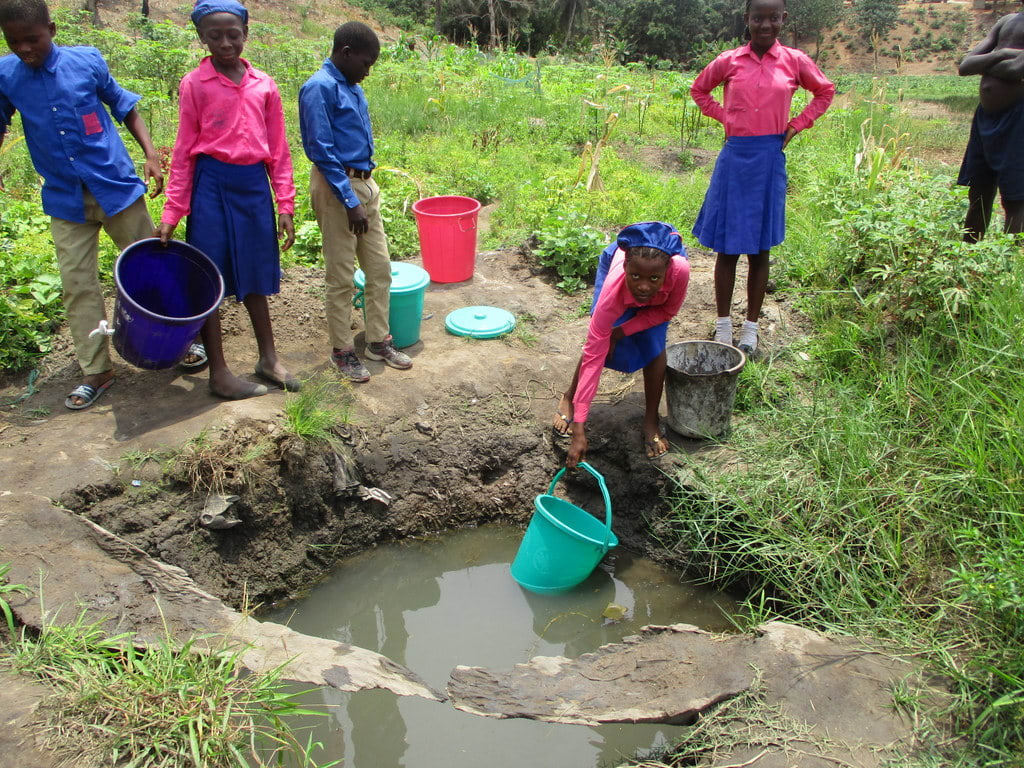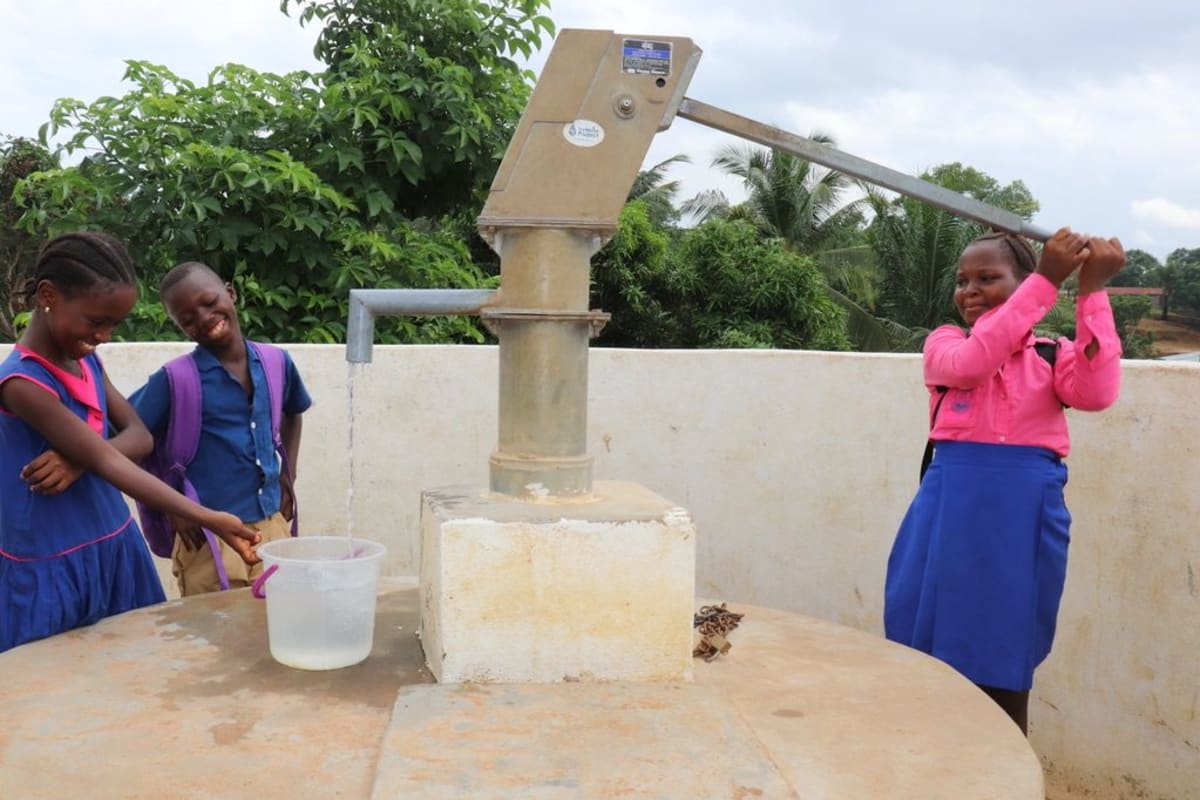St. John Primary School started as a community school in 1970 by Pa Charles Benjamin. The school had no building of its own, so Late Pa Charles Benjamin negotiated with a community elder who consented that his home be used as a temporary school. At that time, the school only had three community teachers headed by Pa Charles Benjamin and all of them were not trained or qualified. The enrollment during that period stood at fifteen.
They built their first classroom structure in 1973. The building was designed to host classes one to seven along with an office space for the headmaster. There has been a lot of staff turnover, and in 2012 they hired a headteacher by the name of Mrs. Annmarie Alexandra Kamara. By that time, the school had grown to 548. Enrollment has declined until today, with a current enrollment of 375.
There are now two school buildings, one for seniors and one for juniors. Each building has office space. There are also two latrine structures. Two latrine doors for the staff, two rooms for the boys and another two for girls. There is a big football field often used by the school for interclass football matches and also by the community for sectional football leagues. There is a temporary structure used as a kitchen located very close to the hand-dug well.
Water Situation
Depending on the time of year, water quantity can be low or dry in both protected hand-dug wells and the swamp.
Most hand-dug wells in this part of the country, where the water table is way below the reach of private local diggers, are dry in the months of March, April, and June. Since the community hasn't been able to deepen their hand-dug wells to find water, they walk further into the swamp to dig holes for water. This is normally the time of the year that the water situation graduates to a crisis. Students have relied on trips to the swamp for about three months so far this year.
The hand-dug well at the school is just like the others in this region, and students spend several school days out in search of swamp water. The holes dug in the ground here look like they're meant for animals. The water is yellowish and the surrounding environment is dirty.
Most parents who send their children to this school can't afford lunch. As a result, kids use water to help curb their hunger.
Sanitation Situation
The current teachers have a great educational background. They will not compromise on hygiene and sanitation. But one factor that impedes good hygiene here is the absence of water. That is where improvement needs to take place. Handwashing facilities need water to function, and water is also needed to clean the latrines. They are on good footing in terms of hygiene and sanitation but need some support with regards water.
What we can do:
Training
There will be hygiene and sanitation training sessions offered for three days in a row.
After our visit, the hygiene and sanitation trainer decided it would be best to teach gather students, teachers, and community members together at the school. They will teach about good and bad hygiene, penning in animals, and building good tools like handwashing stations and dish racks. Most importantly, the trainer will emphasize the importance of having and using even basic pit latrines.
Well Rehabilitation
The well marked for this overhaul is dry for four months every year and needs major work to supply adequate, clean water to the school year round. The pump will be removed, and a hand auger will be lowered and powered by our drill team. This hand auger will allow the team to drill several meters deeper to hit a sufficient water column that will ensure the well supplies water throughout all seasons. As the team drills, casing will be installed, transforming the bottom of this hand-dug well into a borehole. PVC piping will connect this lower system directly to the pump, a construction that we know will also improve the quality of water.
Once this plan is implemented, these students and teachers will have access to safe drinking water in both quality and quantity, even through the dry months.
This project is a part of our shared program with Mariatu’s Hope. Our team is pleased to provide the reports for this project (edited for clarity) thanks to the hard work of our friends in Sierra Leone.

 Protected Dug Well
Protected Dug Well
































